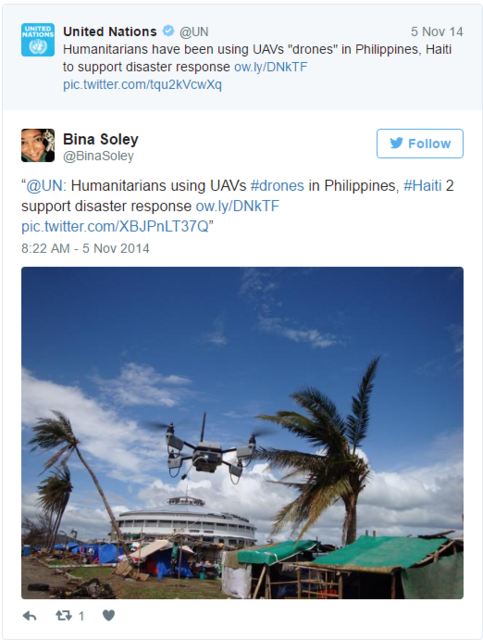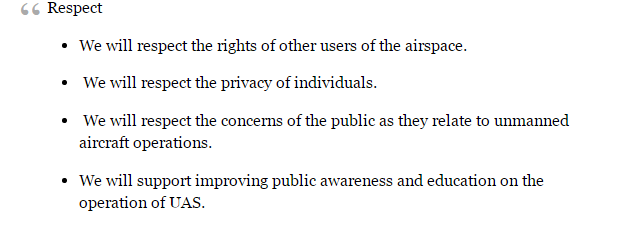The Future of A Double-Edged Sword: 'Invisible' Machines of Destruction or Angels of Relief
Last year, a taxi man was relaxing in his car when he was suddenly shredded into pieces from an air strike. “We came. We saw. He Died”. This is not an uncommon event.
2 years ago, 2 foreign aid workers (an American and an Italian) were accidentally killed in a coordinated airstrike.
The airstrikes were part of a series of covert U.S strikes to wipe out insurgents in parts of Pakistan. Sadly, the major casualties were innocent men, women, and children.
Over three-fifths (61%) of all drone strikes in Pakistan targeted domestic buildings, with at least 132 houses destroyed, in more than 380 strikes.
At least 222 civilians are estimated to be among the 1,500 or more people killed in attacks on such buildings. In the past 18 months, reports of civilian casualties in attacks on any targets have almost completely vanished, but historically almost one civilian was killed, on average, in attacks on houses.
All wiped out in the twinkle of an eye by a highly sophisticated, high-tech machine – A drone.
A Double-Edged Sword
A drone aircraft is an unmanned aerial vehicle, commonly referred to as a UAV. That means it's an aircraft, of any size or type, that flies by itself, without an onboard pilot or passengers. Think of it as a robot plane, controlled either autonomously or via remote control.

The Unmanned Hunter-Killer Changing the Face of War
Many inventions have changed the way nations go to war and drones (and in extension, other war robots) are making going to war less difficult. A battle of thumbs simplifying the “too dirty, difficult or dangerous for human” job of killing other humans.
Just like with other technology innovations, the military has been in the forefront of development, pumping millions of dollars in developing unmanned combating aerial vehicles (UCAV). These drones have been “incredibly useful” in increasing the length of strikes, reducing the no of casualties from the American side, jamming communication of enemies and sadly, killing innocent ones.
The US military, as usual, is in the lead owning thousands of drones followed by the British.
The FAA estimates that by 2020, there could be up to 30,000 drones operating in domestic airspace
With nations increasingly shifting their energy towards cyber warfare, it will be interesting to see the world’s response to the new weapon of destruction.
Invisible to The Public Eye – Illegal Spies In The Sky
Although the military represents a substantial percentage of governmental usage of drones, other governmental agencies like border patrol teams have found drones useful in curbing the influx of illegal immigrants and drug traffickers. Local police teams have also been test-using drones in tracking down fleeing crime suspects.
While all these are beneficial use cases seeking to legally protect the rights and lives of the citizens, some entities are guilty of using drones in illegal ways.
Government agencies in countries like UK and US have been found guilty of running drones in “warrantless” and “illegal” surveillance missions. Private individual and companies are not left out in privacy-intruding drones' operations.
A number of countries have passed laws with countries like Sweden completely banning the use of drones in public spaces.
Throwing The Baby With The Bathwater - Not All Drones Are Bad
Hearing the word “drone” immediately conjures negative reactions in the mind of a lot of people. The nefarious activities of both private and govt entities have painted drones in a bad image.
Like most technological innovations, drones can be used either in good or bad ways. The advantage of being incredibly useful in situations that are too dangerous for humans made its adoption very easy for the military.
However, more beneficial uses of drones are increasingly being discovered and developed.
Angels of Relief
With drones becoming cheaper and common, they have been used effectively in providing much-needed reliefs to disaster-stricken families.
In Nepal, Philippines and Haiti, drones were used in collecting vital information about the number of casualties, situation reports of disaster-stricken areas and condition of existing resorts. These data sets were used in efficiently distributing relief materials.

Teams like DronesForDisaster Relief and UAViators created maps that outlined Arial images for public consumption.
To put it simply, drones are a perfect fit for emergency relief logistics management.
Drones Are Cool

From delivering cakes in China, guiding lost visitors in MIT to watching endangered species in Africa, drones are now being used in a number of cool ways.
Fast and light, virtually all sectors of the economy are looking at ways by which they can use drones to revolutionize the way they carry out activities.
One of the most promising use case for drones is in Product Delivery:
Companies like Amazon are investing huge amount R & D resources into ensuring a fast delivery of products to their customers. Although there are still concerns from the public, companies are successfully testing out this possibility.
Amazon, for example, tested its Prime Air Delivery in the UK while a company in china also successfully delivered cakesusing drones before behind grounded by local authorities.
Tracking Atmospheric Conditions
With climate change posing a serious threat to the survival of man, all available resources are being tried to study and reduce the effects. Drones are not left out in this battle. Scientists are using drones to track atmospheric changes and to an extent, apply findings through gathered data sets.
For example, NASA is sending a UAV into the stratosphere to study how water vapor and ozone interacts. This will help in better studying how to protect the earth surface from harmful UV rays effects. In China where climate change effects are at all-time high, researchers are using drones to track the components of fogs and also introduce elements that can aid visibility.
Taking High Res Photographs
This is perhaps the most popular use of drones among the populace. From sports to news coverage, drones are increasingly being used to take breathtaking recordings and snapshots of sceneries.
For example, students in colleges of journalism are being taught how to use J-robots in aiding investigative reporting. A Music Video was entirely shot using a drone while outdoor sports like snowboarding are using drones to take near-impossible high-res shots.
Agriculture and Environmental protection
Like I briefly stated in my last post, drones (and other automated machines) are widely being used in the farm. They are not only used to do simple monotonous tasks like spraying water and chemicals, they are also used to monitor soil conditions and watch farm intruders.
Environmental hazards like forest fires outbreaks, animal poaching, and toxic wastes dumping are also being combated with enhanced drones’ usage.
Conclusion
With an estimated $100 billion dollar industry, drones are here to stay. In the future, drones are forecasted to be “as common as pigeons”. When that happens, there will be a new array of cool possibilities available for everyone.
However, like all other super-cool tech advancements like Artificial Intelligence (AI) and Bio-modifications, appropriate measures have to be made to ensure that these double-edged swords are used in a manner that positively benefits mankind.

Do you have a drone? Have you seen one before?
I write every now and then on topics – (AI, Economics, Psychology and All Things Tech) - that pique my curiosity. And I would love to hear from you.
Sources:
http://reason.com/blog/2014/05/27/drone-strikes-in-pakistan-mostly-hit-hom
https://en.wikipedia.org/wiki/Unmanned_aerial_vehicle
http://www.informit.com/articles/article.aspx?p=2433612
http://www.globalresearch.ca/obamas-drone-war-against-pakistan-killing-taxi-drivers-for-freedom/5531769
http://www.makeuseof.com/tag/drone-wars-uav-tech-transforming-future-war/
https://www.nytimes.com/2016/11/03/us/drones-canadian-border.html
http://www.theverge.com/2013/7/26/4559870/fbi-drone-surveillance-in-the-us-10-cases-rand-paul
http://www.independent.co.uk/news/uk/politics/government-use-of-surveillance-drones-is-probably-illegal-9789296.html
https://sputniknews.com/science/201605161039689463-drones-humanitarian-crises-help/
https://www.virgin.com/virgin-unite/business-innovation/drones-the-good-the-bad-the-future
http://edition.cnn.com/2013/11/03/business/meet-your-friendly-neighborhood-drones/
https://nextcity.org/features/view/drones-can-do-good-cities-drones-civic-tech-science-cities
http://dronebuff.com/uses-for-drones/#Disease_Prevention
http://www.forbes.com/sites/kashmirhill/2012/07/06/drone-industry-promises-not-to-be-evil/#2b277e55310b
http://www.livescience.com/28137-cool-uses-for-drones.html
So far, other than atrocities caused by drones, I have also seen breathtaking imagery, whether being photographs or cinematography. Though polarized having experienced a polarizing phenomena, it is the future that interests me most in relation to their existence, especially when it comes to having kids playing on-line games of war where they are "driving a drone", apparently virtual... I guess I can let your mind roll from here.
I can't help but think of this outcome since the beginning of the age where we are playing on-line with games of destruction, basically, over 15 years ago. I don't have an answer to that and a lot of question about the slow progressive and relentless invasion and pollution of our air spaces. I just wonder, when enough will be enough and whether it will be too late before we wake up to what is actually healthy for us in relation to it all.
Great article, thanks for sharing and namaste :)
I write a little on drones. Regulation is going to be a nightmare. While the military may have 30,000 UAS devices, annual sales of drones of all sizes were in excess of 700,000 in 2016. While many of these are small devices they all use airspace and they all fly over other people's property.
I created this image to encourage my readers to do the right thing - and to reduce the risk that regulations become onerous
(I own the rights to this image)
That's awesome.. Can you write more on them for Steemit? Gave you a follow and I will be looking to hear more about them from you.
You're right! One of the greatest headaches from the widespread drones usage will be traffic regulations. Already, drones are already not permitted to fly above a certain limit. It will be certainly interesting to see how all these play out.
Thanks so much for sharing the image. I like it ;)
Wow, great research and analysis. I guess drones can be used for good for evil purposes. The only drones I've seen so far are the little ones that someone buzzes around my neighborhood park (just for fun, I think, but I could do without the noise).
Last year Domino's launched drones for pizza in 1 or 2 spots -- UK, New Zealand etc so they definitely can be used for the good LOL. Amazon was likely the first company to do this but that news was out likely 18 mths ago before it happened.
- When a drone can deliver to me, the civil liberties stolen from humanity, THAT will be a great day indeed.
Thanks, Tom. I'm glad you found this piece a nice read. Have never seen a drone before (well, except on screen). And thats why Im more fascinated by them.
Do you feel you're being watched when they are around you?
I was thinking just now before bed about your generosity with me this week and although this is not related to drones or your post, I figured this is the best way to just come and let you know I am still appreciative of your gesture.
Thanks again. BD
You're welcome. I'm glad you liked the gesture.Do have a fantastic week ahead.
Thanks again for the kind words and the help.
As per any technology, drones are also used for war. This is because technology is quite an advantage. Weapons are taking advantage of chemistry, robotics, electronics, fluid dynamics, nuclear physics, and many other field of science. The argument about drones killing civilians is very weak: the other way to do the same is to use a manned aircraft which would drop the bomb from the same distance, having the same hit ratio: just more expensive. Or, you could use a cruise missile, which carries a more devastating warhead, because of size: even less precise, and more expensive.
The claim "drones are killing people" to me sounds very unlikely: they carry a smaller payload compared with manned aircraft or cruise missiles. Sure, a small 15kg HE warhead killed a taxi driver in Afghanistan: now do the same with a 250KG JDAM warhead , and the whole block is wiped out. Or you prefer a 1-ton HE cruise missile warhead?
Being honest, I suspect drones are SAVING civilian lives: just take a picture of Aleppo, and see how the alternative looks like.
Like any new invention or technology, we must set the limits to prevent abuses. Very nicely documented post! :)